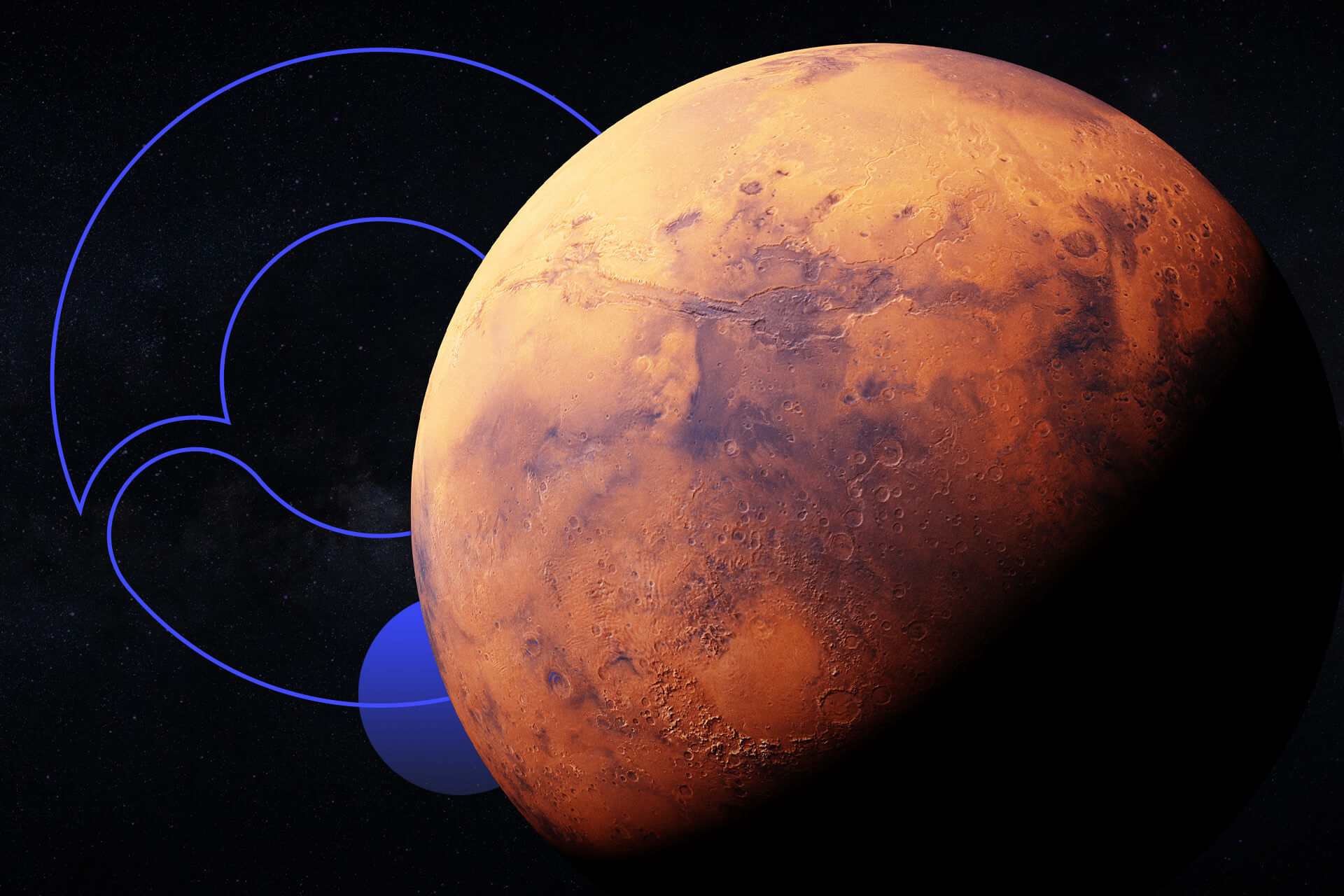



Revolutionized is reader-supported. When you buy through links on our site, we may earn an affiliate commision. Learn more here.
Mars, named for the Roman god of war, is one of the few planets we can see unassisted from Earth. It has long been a main subject of science-fiction novels, and some people believe humans could live on it — although that step requires significantly more research and technological advancements to achieve safely. Here are some interesting facts about Mars that you need to know.
Mars really stands out, and not just because of its red color. Here’s some Mars information to pique your curiosity.
Olympus Mons is 16 miles (25.75 km) tall, making it more than three times the height of Mt. Everest, which holds the title of the tallest mountain on Earth.
The Martian surface is home to some of the largest dust storms in the solar system. One, in 2018, covered half the planet and took the Opportunity rover permanently offline.
That is, at least, as far as we know. Right now, there are no human astronauts on the red planet, just rovers like Curiosity, and orbiters that monitor the Martian surface.
It might look dormant at first glance, but lava flows on the volcano’s slopes are so recent that astrogeologists believe it might still be active.
For a long time, we thought Earth was the only inner planet with liquid water. However, researchers have been trying to determine if Mars might, too. Recent research indicates it has a massive underground water reservoir that is large enough to fill oceans on the planet’s surface. Additionally, this amount of water could fill the entire planet to a depth of about a mile.
Right now, Mars has two moons — Phobos and Deimos. However, sometime in the next 20-50 million years, the planet’s gravitational forces will likely pull Phobos apart. It will become a glorious ring that might rival Saturn for its beauty.
Gravity on Mars is 38% of what it is on Earth. If you weigh 100 pounds (45.36 kg) on Earth, you’d only weigh 38 pounds (17.24 kg) on Mars. What a weight-loss plan!
Mars is only 0.38 astronomical units farther away from the sun than we are. The distance between Earth and the Sun is 1 AU. From the surface of the red planet, the sun looks half the size it does from Earth.
Unlike here on Earth, Mars doesn’t have a magnetic field. This characteristic means there is nothing to protect astronauts on the Martian surface from interstellar radiation.
While it might sound like science fiction, aerospace engineers are toying with the idea of terraforming Mars once we get astronauts on the planet’s surface. This feat would involve changing the atmosphere to be more like Earth, allowing human life to survive without the need for spacesuits or domes. It’s not currently possible with present-day tech, according to NASA.
Even if we eventually have the technologies that enable people to go to Mars, some research indicates it might never be safe. For example, a 2024 study showed that these journeys would permanently damage astronauts’ kidneys, changing their structure and function.
Many people looking for facts about Mars want to know whether the Red Planet was once home to living things, meaning that things have changed between then and now. Researchers sought to answer this question by probing the isotopic composition of carbon-rich minerals associated with one of Mars’ craters. The results showed that the planet may have had a warmer, denser atmosphere billions of years ago, which could have sustained life.
A significant question to answer about potential Mars colonization efforts concerns building materials. Since bringing them to the planet would prove too cumbersome, many people think the next best thing is to find some at the destination. One research team found several solvents they believe could extract materials found on the planet, allowing people to use them for 3D printing.
An unexpected discovery occurred when a Mars rover drove over a rock and cracked it, revealing pure yellow sulfur crystals. Scientists notably said that elemental sulfur only forms in specific conditions not previously associated with this part of the planet. Additionally, the rover found a whole field of these stones, making researchers eager to explain their unexpected presence.
Being curious about science will be a key component of an upcoming investigation that will be critical for enabling future discoveries about the Red Planet. More specifically, in February 2024, NASA announced that it needed volunteers to participate in a Mars simulation for a year. Those chosen will live in a Martian-like environment and work through many challenges common to life in space.
Some private entities — such as SpaceX and Virgin Galactic — already have dedicated webpages about planned Red Planet trips for everyday individuals. This Mars information does not necessarily mean such journeys will be imminently possible anytime soon — or at all. However, people with the means may still want to fork over the cash to ensure they’re part of these missions.
Using high-tech rovers to determine new Mars information is not always necessary.
A case in point dates back to 1931, when someone found a meteorite in a drawer at a university campus. Although people do not know how it ended up there, recent research suggests the meteorite’s minerals interacted with water on Mars during their formation less than a billion years ago, indicating Mars had that liquid at the time.
Want to learn more about the fourth planet in our solar system? Check out these quick planet Mars facts that you can store away for trivia night:
Like Mercury, Venus and Jupiter, Mars is another planet visible to the naked eye from the Earth’s surface. This fact makes it difficult to determine who may have been the first to discover it. What we do know is who first recorded observations of Mars. That honor belongs to priests in Ancient Egypt, who dubbed Mars “Her Desher,” which means “the red one” sometime around the second millennium B.C. As with many other visible planets, discovery is often credited to Galileo Galilei because he was the first person to observe Mars with a telescope.
Mars is known for being our nearest celestial neighbor and for its iconic red color. Its surface color led to it being named after the Roman god of war. Mars is also known for being one of the four planets that are visible to the naked eye.
Right now, Mars is on everyone’s mind because once we establish a permanent presence on the moon — a goal NASA hopes to accomplish by 2028 — it’s our next destination. It may take us the better part of another decade to reach the red planet, but we will make it there eventually.
The thing that makes Mars unique among all the other planets in our solar system is its similarity to Earth. Millions of years ago, it may have even been lush and green like our own planet is today. Life on Mars would have looked very different from life on Earth, especially with the planet’s lower gravity. We’ll learn more once we reach the Martian surface ourselves and can really start to explore.
Did you learn anything new about Mars? What was your favorite piece of information? Let us know in the comments below. Feel free to share some of these facts about Mars with people you know, helping them learn more about a planet that has fascinated people for generations and spurred new interest in scientific research.
Featured Image Credit: ESA – European Space Agency & Max-Planck Institute for Solar System Research for OSIRIS Team ESA/MPS/UPD/LAM/IAA/RSSD/INTA/UPM/DASP/IDA CC BY-SA 3.0-IGO via Wikimedia Commons
Revolutionized is reader-supported. When you buy through links on our site, we may earn an affiliate commision. Learn more here.


This site uses Akismet to reduce spam. Learn how your comment data is processed.